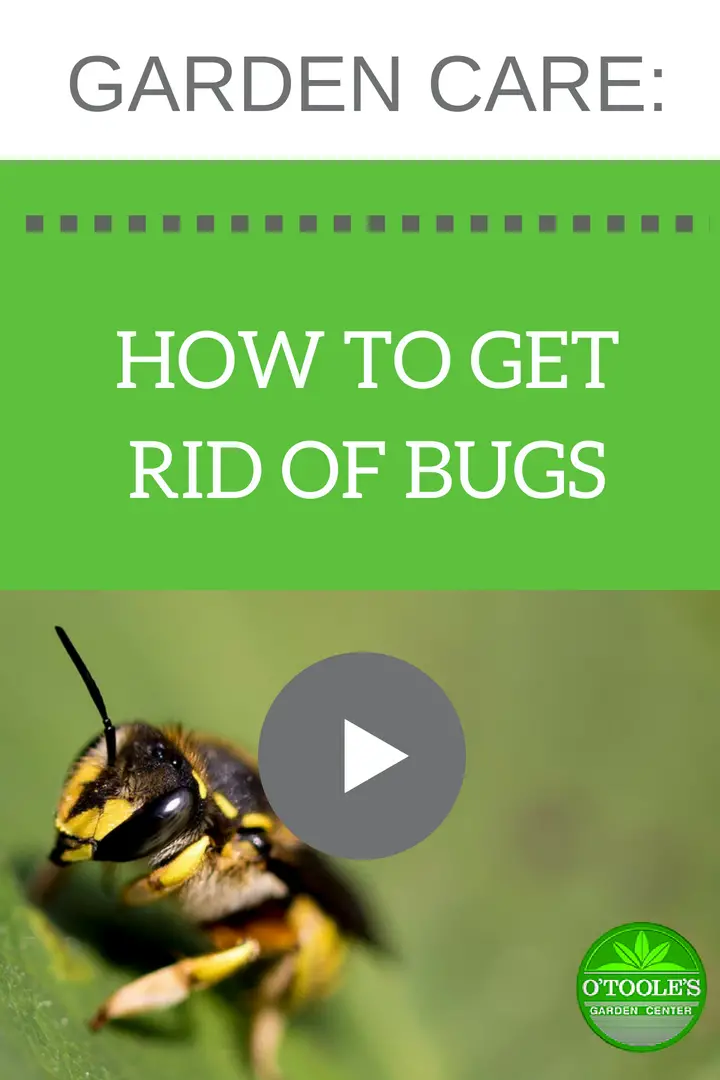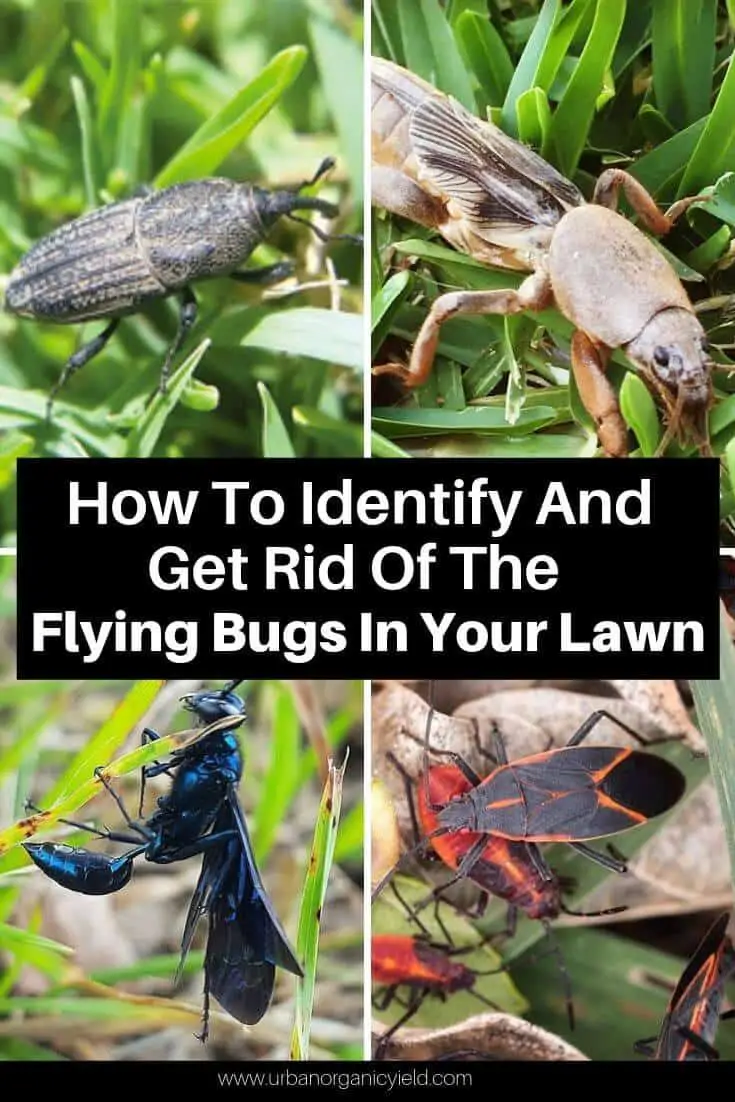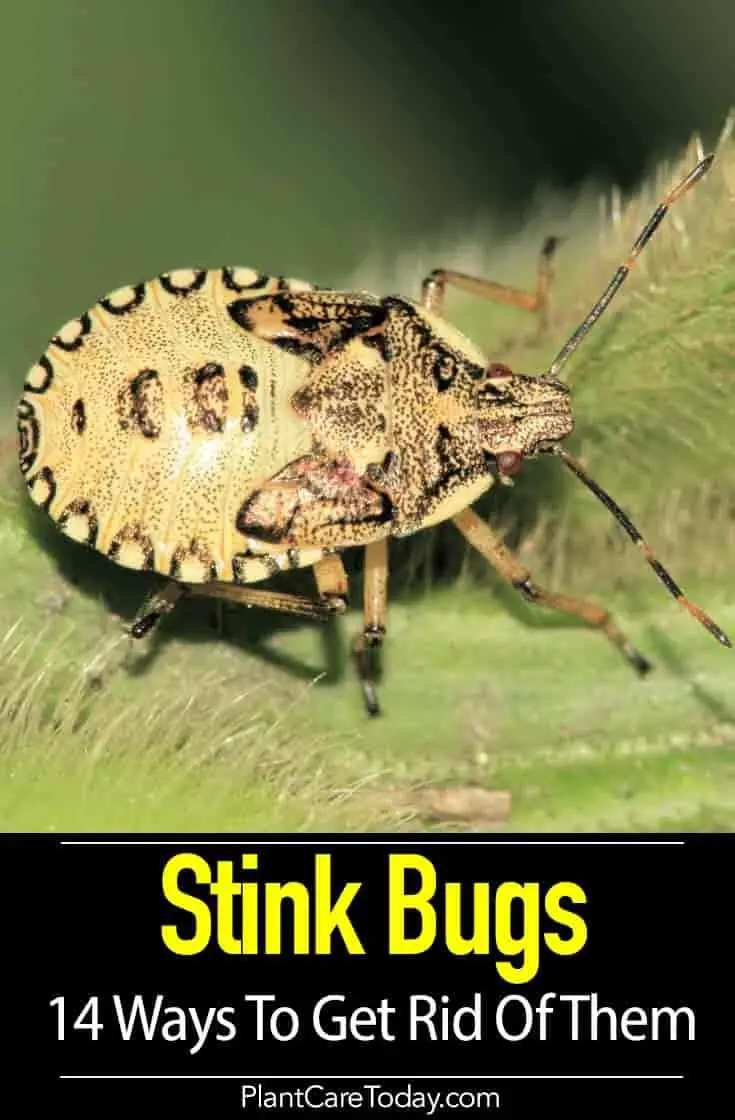Preventing Red Bug Or Chigger Reinfestation And Bites
- Prevent Red Bug reinfestation by reducing tall grass and shady areas around your yard and clearing up leaf litter.
- Wear long socks and long-sleeved clothing when spending excessive time outdoors and take a shower immediately upon returning from outside to prevent irritating bites. You should also use repellents like DEET to keep Red Bugs away.
Start With Clean Soil
Good soil can actually deter garden insect pests. But it takes time to prepare. Heres a method that works great for me:
- First till in organic matter like compost when the growing season begins. This will keep your soil clean by adding natural elements and compounds that help keep pests away.
- After tilling, cover your garden with black plastic or cardboard for 6 months. The heat that builds up underneath it will kill most garden pests and their eggs, weeds, parasites and a host of other harmful microorganisms.
- After removing the plastic, lightly cultivate the soil. Now youre ready for planting.
A Healthy Garden Attracts All Kinds Of Pestsraccoons Rabbits Beetles To Name Just A Few Weve Compiled A List Of 22 Tried
Garden pests come in all shapes and sizes, which makes gardening a challenging endeavor at times. The best preventative measure to take to encourage a pest-free garden is to keep your soil healthy and the pH levels balanced. However, we know that a healthy garden attracts raccoons, rabbits, beetles, and other pests. Weve compiled an arsenal of 22 tried-and-true ways to combat garden pests without the use of harsh pesticides.
Don’t Miss: How To Get Rid Of Creeping Charlie Without Chemicals
To Chinch Bugs Your Lawn Is Dinner
You do everything right. You water your lawn regularly. You feed it when you’re supposed to. Yet, here and there, you have what looks like drought damage. If you live in the south and have St. Augustinegrass or zoysiagrass, you could be entertaining a whole troop of chinch bugs. These nasty little critters suck your grass blades dry. Then they inject a poison that kills them. They can kill patches or your entire lawn. But you can get even.
Enlist The Help Of Feathered Friends

Birds consume lots of insects and are natural and attractive garden residents. Lure bug-eating birds to your garden area by placing a birdbath regularly filled with fresh water. This will also deter them from picking a tomato for the juice. Erect a bird feeder close by as well. Keep it filled with seeds in late autumn through early spring. This way, the garden will be their existing haven, and when summer rolls around, and they will feed on the insects at hand. Guinea fowl set loose in the garden or lawn will eat ticks, hornworms, and Japanese beetles. Most wont scratch or ruin plants or eat the vegetables as chickens may.
You May Like: How Often Should I Water My Lawn In Colorado
How Can You Identify A Stink Bug
First things first what do brown marmorated stink bugs actually look like? Keep an eye out for the following signs:
- Brown marmorated stink bugs have a rectangular-shaped head which differentiates them from other varieties.
- Juvenile stink bugs have spines on the sides of their body, says the RHS.
- As their alternative name shield bug implies, their body is the shape of a shield.
- They have brown mottling, with distinct pale and dark markings around the edges of their body.
- Size-wise, these stink bugs are between 1417mm long around the size of a U.S. dime.
- Stink bugs often make their way indoors in the winter, seeking warmth. They like to hide in any nooks and crannies they can find think attics, basements, under furniture, or in cracks in the walls. Outdoors, you might find them under rocks, furniture and windowsills, or on sunny garden walls, to name just a few likely places.
- You’ll probably notice the smell before you actually see them. This smell that they secrete is a pheromone that attracts more of the bugs, resulting in large congregations.
Another type of stink bug to look out for in the US is the similarly-sized green stink bug, which, you’ve guessed it, is bright green. These pests also feast on crops, including tomatoes, corn, and beans.
What Chinch Bugs Look Like
Chinch bugs are easy to recognize but hard to see.
- Adults are about inch long with black bodies and white wings folded across their backs.
- Nymphs start out yellow, then turn red as they grow, eventually becoming black as they reach maturity.
- Chinch bugs mature in about 4 to 6 weeks.
- Telltale white stripe across their bodies.
You May Like: Harbor Freight Tires Go Kart
Clear Up All Little Of Leaves And Debris
Spittlebugs love old plant debris, that is where they are fond of laying their eggs, so they are most likely going to reside on as many as they can find.
If the bugs cannot find a suitable environment to lay their eggs, then they would find somewhere else besides your yard to do so.
Make it a habit to constantly clear out any plant debris you find around your garden. Keeping it debris-free is the first preventive measure you should take.
If you find any decaying organic material in your garden, then make sure those are removed as well.
Constant mowing of your lawn and general garden maintenance will go a long way in keeping the bugs away.
The less plant debris you have in your yard, the fewer spittlebugs there will be.
Apply Nematodes To Control Grubs Naturally
You can apply nematodes to get rid of grubs in the lawn naturally and within a few days. Beneficial nematodes are very tiny roundworms that move in the moist soil under your turf and enter into the grubs where they release pathogens that attack the pests and kill them.
Heres how to use beneficial nematodes to eliminate grubs naturally:
- Choose beneficial nematodes that work against grub worms.
- Mix the nematodes with distilled water in a lawn or garden sprayer.
- Water your lawn adequately to keep it moist.
- Spray the nematodes on a grub-infested lawn in the evening.
Pro tip: Apply nematodes only in the evening because they get killed by light and heat. Also, make sure the soil temperature is above 60°F before applying this natural treatment. Water the lawn 15-20 minutes after applying the nematodes for the best results.
Repeat the application after two weeks for the best results in controlling grubs in your lawn.
The beneficial nematodes, also called entomopathogenic nematodes, are very effective and mobile in moist environments. They seek and follow their hosts and infect them. Soon after, the white grub population in the lawn will be destroyed.
Also Check: How To Get Rid Of Rye Grass In Lawn
Ortho Bug B Gon Max Insect Killer For Lawns
- Make sure this fitsby entering your model number.
- Kills and prevents 100 listed insects for up to 3 months
- Kills above and below the surface
- 10 lb. bag treats up to 10,000 sq. ft.
- Use on lawns and ornamentals, around home perimeter, and in vegetable gardens and flower beds
- Guaranteed to kill or your money back
- Kills and prevents 100 listed insects for up to 3 months
- Kills above and below the surface
- 10 lb. bag treats up to 10,000 sq. ft.
- Use on lawns and ornamentals, around home perimeter, and in vegetable gardens and flower beds
- Guaranteed to kill or your money back
Outnumbered But Not Outsmarted
With an estimated 40 million insects in a typical acre, it’s impossible to completely eradicate them. And that’s good, as most insects are considered beneficial because they eat other harmful insects and provide food for birds and other animals. Therefore, identifying turf-damaging insects and controlling them selectively is the best strategy.
Most insects only damage grass at certain points during their life cycle. Once the pest has been identified, the best approach is to control it at the insect’s most susceptible life stage, which is usually during the immature or larval stage. Keep in mind that an insect problem usually occurs as a result of a breakdown in proper lawn maintenance. Stressed grass is more predisposed to insect invasion. Healthy lawns can coexist with a higher level of insect invasion, so check mowing, fertilizing, irrigation and cultivation practices before resorting to pesticides, as these were likely contributing to the problem, and will contribute the next time as well.
Also Check: Lawn Mowing Simulator Ps5
Add Landscaping Plants That Bugs Hate
Bugs hate strong scents of mint or citrus. Mix plants with those scents into your landscaping, especially near the porch, patio, or deck for added beauty and functionality.
Here are some pest-repelling plants and the bugs that hate them:
- Basil: flies, mosquitoes
- Catnip: mosquitoes, ticks, flies, cockroaches
- Chrysanthemums: roaches, ants, ticks, fleas, bedbugs
- Lavender: moths, fleas, flies, mosquitoes
- Citronella: mosquitoes
Chinch Bug Id Anatomy And Sexual Dimorphism

Chinch bugs are about long when fully grown.
They have a gray/black body with fine hairs, white wings, and dark legs. Wings are folded over their backs and their forewings have a small triangular marking on them. There are both long and short-winged versions of chinch bugs.
Male and female chinch bugs look nearly identical and have no significant differences.
Nymphs are about a pinhead size and change colors over time.
Theyre often found in denser grass and appear during the summer months and will lay eggs during this time. Theyre hiding in the grass during winter until spring rolls around and temps hit about 50F. Then theyll fly around and start laying eggs.
Females lay about 3000 eggs over 40 days. Eggs are laid in leaf sheaths and hatch over a short period. The eggs will hatch into nymphs which grow into adults in about 6 weeks, depending on temperatures.
Don’t Miss: Replacement Parts For Murray Lawn Mower
Clean Up Food And Beverage Crumbs/remains
While an unkempt lawn doesnt actually attract grass spiders, it does attract the insects that grass spiders eat. Food crumbs left behind after a barbeque, for example, will attract ants, which will – in turn – attract grass spiders. On the other hand, a well-kept yard will discourage grass spiders and other small pests from setting up shop.
If you like to grill outside in the summer, make sure you clean up after each cookout. Crumbs, spills, grease, and other leftovers look like a buffet line to bugs.
Identify Lawn Bugs And Pests And Learn How To Deal With Them
There are a few different types of insect that become a ‘pest’ when they invade your lawn in large numbers. Some can do significant damage very quickly and therefore need to be treated as soon as you notice signs of their presence.
With this in mind, finding bugs and worms in your lawn isnt always a sign that there is a problem, in fact it can mean that your lawn is thriving! Learning to identify the problem bugs is the best way to ensure rapid and appropriate treatment without further damage to your lawn. Things like ants, spiders and worms, although annoying, are unlikely to damage your lawn.
The one pest we come across most frequently in South Australia is the black beetle and its earlier, more damaging, larvae stage more commonly known as grubs. Dont worry, there is a great trick to identify grubs in your lawn and a few good treatment options too!
If youre unsure, you can send us a photo of your damaged lawn and any bugs you find and we can help you identify them!
Recommended Reading: Cub Cadet At Lowes
Water Plants In The Early Morning
Why? Well, plants primarily need water to help with photosynthesis, which occurs during the day. Also, if you water later in the day, the leaves will be damp during the cooler nighttimean ideal condition for promoting fungus and other diseases. When you do water, soak the roots rather than getting the foliage wet. Soaker or drip hoses are a good investment. Follow these tips to conserve water in the garden.
Identifying Common Lawn Pests And The Damage They Cause
The best way to control lawn pests is to identify them correctly, get to know their life cycles and symptoms, and then treat them promptly and properly at optimal times.
Common signs that pests have invaded your turf include brown spots, dead and dying grass patches, wilting blades, bite marks on grass, and, of course, insects in the grass or turf layer. Signs of underground pest damage include thin or missing roots and holes in the soil.
The following pests can cause significant damage to your lawn:
You May Like: How To Reverse Over Fertilization
Despite Their Tiny Size Chinch Bugs Can Wreak Havoc On Your Lawn Here’s How To Spot An Infestation And Get Rid Of These Destructive Pests
If you notice mysterious yellow patches of grass that turn brown and die rather than perk back up with regular watering, you may have a chinch bug problem. Unlike other types of turf grass pests, chinch bugs must reach a high population density before you notice anything amiss. Once they begin to flourish, however, they can devastate an entire lawn in just weeks.
Surprisingly, your lawn can host quite a few chinch bugs without causing noticeable damage, says agronomist Bob Mann, director of state and local government relations for the National Association of Landscape Professionals. Its only when conditions favor an explosion in population that they become problematic.
Chinch bugs are found in most states and all types of turf grass. Chinch bugs are infamous for causing damage to lawns all across North America, says Drew Wagner, chief technical officer of Sod Solutions. Often a chinch bug infestation is confused with a water drought issue, however.
Early detection of a chinch bug infestation is key to avoiding expensive lawn repair or turf replacement. Heres what you need to know.
On This Page
Are Grass Spiders Poisonous
While grass spiders are not poisonous, they are venomous. In most cases, their venom is not a risk of people. Instead of biting unsuspecting gardeners, grass spiders use their venom to subdue prey.
Grass spiders have very small fangs that cannot generally puncture human skin. However, the exception is people with thin skin – such as older people and babies. These populations may be vulnerable to grass spider bites. If a grass spider bite does occur, the result is typically minimal irritation. In rare cases, necrotic skin lesions and bacterial infections can occur.
Grass spiders are a shy spider species. They dont seek out people and are unlikely to bite unless they feel threatened.
Don’t Miss: How To Start Your Own Lawn Mowing Business
Tips For Using Maggie’s Farm Yard Bug Spray
For effective pest control, you need to make sure you know how to apply insecticide sprays. Check out a few tips for using a bug spray in your yard.
- Always read and follow instructions on product labels.
- Its best to apply sprays in the evening when temperatures are cooler to avoid leaf-burn. You can also apply in the morning.
- Apply in a sweeping motion, letting the spray overlap. This will help ensure you cover your lawn.
- Keep moving! Youll need to move around to ensure you cover the most ground.
- Dont over-apply. For preventative treatment or light infestations, apply at a rate of 500-600 sq. ft. per minute. For heavier infestations, apply at a rate of 250-300 sq. ft. per minute.
- When spraying vegetation, dont just spray the top of plants and shrubs. You want the spray to go deeper where pests hide.
- For perimeter treatment in fall, spray the lower portions of the foundation. Youll also want to spray the perimeter about 3 feet out.
What are your yard care go-to tips? Wed love to hear them! Leave a comment below!
For scientifically-proven, effective pest control that is family-friendly and healthier for the environment, try Maggies Farm pest control products. Our plant and mineral-based products are developed by scientists and seasoned pest control professionals to be the most effective family of green pest control products available. Find out why Lifes Better On The Farm!
By Step Guide: How To Get Rid Of Flying Bugs In Your Yard

Like other life forms, flying bugs need heat, water and food to survive. And your house yard is the best place to find that. Therefore, the best way to eradicate the threat is to eliminate their means of survival, such as standing water and garbage.
Another method is to contaminate their natural habitat with harmless products for plants, humans and animals. In this step-by-step guide, youll learn what to do to eliminate every type of flying bug common in house yards.
So lets go to see steps of how to get rid of flying bugs in your yard
Also Check: Where To Buy Murray Lawn Mowers
Spray Yourself With Bug Repellent
For protecting yourself from buzzing and bites, youll need a personal, body bug spray.
Gaughan suggests using a DEET repellent spray, which the Environmental Protection Agency states does not present a health concern for humans. This one from Bens claims to provide 10 hours of protection against tick and mosquito bites.
For a more natural solution, look toward a plant-based repellent like the oil of lemon eucalyptus. Gaughan recommends a spray like this one by Repelits DEET-free and provides protection without that sticky or greasy feeling.
Try Avons Skin So Soft Bath Oil, which is an old favorite among moms. It also has an interesting origin story as a bug repellentas in, it wasnt meant to be one. The bath oil has glowing reviews for keeping mosquitoes away.
